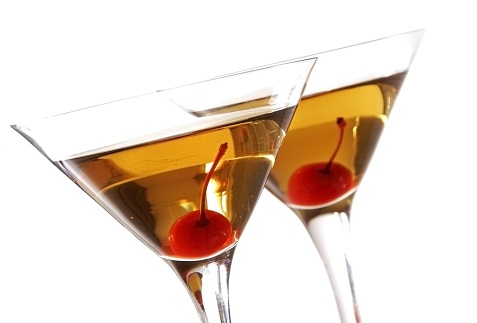Alcohol and the Movies: It’s All Well and Good Until Somebody Gets Addicted

On average, Americans have four alcoholic drinks a week, a Gallup poll revealed. At the end of a long day at work, when the sun is setting and the day is done, the most natural thing in the world appears to be a beer, although wine comes in a close second, and liquor last because it favored by only 22% of the population.
According to the American Addiction Centers, “For some, one drink during happy hour is plenty. These adults can take a sip of alcohol, and then stop drinking for the day. But there are some people who just can’t stop with a sip. These people might have an alcohol use disorder. The National Institute on Alcohol Abuse and Alcoholism (NIAAA) says that about 7 percent of American adults fall into this category.”
A Magical Elixir
While ostensibly alcoholic drinks are imbibed as just a way to bring stress levels down after an oppressive day, alcohol is not viewed as something as boring and mundane as medication. Instead, it is glamorized to be much more than a depressant drug that cuts the stress hormone level cortisol while reducing cognition, vision, coordination, and reaction.
A curious thing happens when people enjoy an evening cocktail at home or with friends after a long day: alcohol is re-imagined as some kind of magical elixir that makes a person wittier, smarter, more affable, and far more able. In other words, people who drink often imagine alcohol’s effects are far different than it actually is. They imagine that alcohol does just the opposite of what it really does. Despite the overwhelming repeated evidence that alcohol slurs speech, blurs vision, and makes one a klutz, this hard evidence does not appear to be able to blunt this illusion.
Where did this idea of alcohol as a magical elixir arise?
The movie industry has done the reimagining for us, persuading us to believe that this is the stuff that cinematic heroes do.
John Wayne created a legacy for a pantheon of cinematic heroes that real men drink but don’t get drunk. In fact, drinking doesn’t do them any harm. Before a perilous adventure, it offers a dose of courage; after an unexpected setback, it offers a chance to regroup; and after a hard-won victory, it offers an opportunity to celebrate. Those fascinated by a self-image of a tough-as-nails working class hero, like the idea of a cowboy chugging down rotgut rye in a dusty saloon glass.
Others, usually more metropolitan men, may lean toward the idea of James Bond asking for his martini to be shaken, not stirred while sitting calmly at a table with the arch villain, completely unperturbed by the possibility of slurring his words, losing sight of his target, or saying something stupid that would blow his cover. Here drinking is associated with being suave and debonair.
Women, too, have their archetypal cinematic heroines, and pursue the glamorous the effects of alcohol with the same enthusiasm.
Interestingly enough, when cinematic heroes drink, alcohol often appears to works on them the same way “NZT-48″ pill worked on Bradley Cooper in Limitless, bringing 100% of their brain capacity online.
Obsession, Addiction and Rehab
Since the effects of alcohol are far different in real life than portrayed in the movies, an obsession for looking cool turns into an addiction that makes life harder. This addiction affects nearly 7 percent of Americans, reports the Substance Abuse and Mental Health Services Administration (SAMHSA).
When addicted, people may drink alone at home or socially, and they appear unable to stop their urge to drink from one day to the next. Although the effects of alcohol may appear to be transient, it creates a chemical change in the brain that makes the addiction increasingly harder to give up.
In some people, the desire to drink may become obviously debilitating. A person finds it hard to hold down a job, pay rent, handle their expenses or assume any significant form of social responsibility. They may even become violent or promiscuous.
In other people—those considered “high-functioning alcoholics”—they only drink enough to give them a light feeling of intoxication but can participate fully in the socio-economic world.
It’s rare that someone stops on their own volition. Usually, they do so when things have become critically out of control. While self-volitional attempts to become sober do happen, it is not common, and often enough the attempt is too weak-willed to be successful.
Often when people drink too much family intervention is necessary. This can include confronting the behavior and looking into alcohol rehabilitation options. The family has to decide whether outpatient care or residential treatment is better.
When there is no family or the family does not intervene either out of fear or indifference, then intervention may occur from a court order. At this point, a person’s alcoholism has led them to get into serious trouble with the law.
The Persisting Illusion
Hollywood spins its stories of heroes and anti-heroes with the theme of alcohol serving a role as the archetypal image of a magical elixir. In movies, alcohol does not debilitate (unless it’s an anti-hero plot). Instead, it invigorates, sharpens the mind, and leads to extraordinary acts of courage. However, in real life, alcohol does not work this way and causes mayhem in its wake.
Sources
Gallup Poll: http://www.gallup.com/poll/156770/majority-drink-alcohol-averaging-four-drinks-week.aspx
American Addiction Centers: http://americanaddictioncenters.org/alcoholism-treatment/
James Bond: http://blog.bullz-eye.com/2015/10/28/james-bond-the-spectre-of-a-boozehound/
Related Posts
Posted in: Lifestyle
Tags: drinking alcohol





